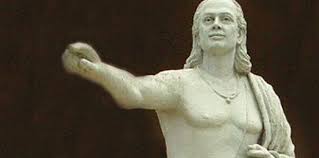The Gupta Empire that began its reign some 500 years after the Mauryan Empire was a period marked by scientific and technological innovations. The British who ruled us for 200 years and the leftist `intellectuals’ who became their faithful followers undermined this great legacy of ours.
By Ashok. N.R.
One of the areas that has always been respected globally, above economic prowess, is technical prowess and ability to innovate. The French, the Japanese and more historically, the Persian empires have been oft quoted examples of the vanguard of innovation.
Indians… well, we have always been great followers. Indians are great at taking up innovations from the West. But then were we always that way?
It suited invaders of the Indic sub-continent to subjugate the native population in every possible way. The British wanted local people to help them with day-to-day mundane jobs, while higher learning and innovation continued in Europe. The British had no use for that here in India. Hence, people from our general population were primarily trained as clerks and accountants, instead of being encouraged to learn medicine, science and mathematics. For a period of 100 years that the British ruled India (not merely present as the East India Company, but as a crown rule), our innovative spirit came to a grinding halt.
Were the Indic people historically followers? There is ample historical proof that the scientific thinking and temper in ancient Indic region was well ahead of its times.
Look at the Gupta period that came in about 500 years after the Mauryan Empire. Known as the Golden Era, this period were far ahead of its times in diverse areas. Not only was there a great degree of emphasis on literature and arts, but mathematics, technology, veterinary and medical sciences, architecture – all got a huge fillip during this period. A lot of groundbreaking work around science, mathematics and medicine happened during this period.
We do hear about the famous Aryabhata every now and then. But, how much do we know beyond the fact that he put forth Zero and accurately described the value of pi? Or that he explained principles of geometry ranging from triangles and circles to rectangles? Or the fact that Aryabhata was only 23 years old when he wrote Aryabhatiya? The notations in Aryabhatiya set the tone for decimals, a concept largely unknown to the world at that time. How many of us take pride in the fact that it was Aryabhata’s work that the Arabs took to the western world, which now forms the basis of western mathematics?
Around the same period, Brahmagupta, another mathematician towards the end of Gupta Dynasty, set the rules on operating with negative values using zero.
Both Aryabhata and Brahmagupta were pioneers in Astronomy. Aryabhata accurately described the earth’s rotation around its own axis and computed even more accurately eclipses that predated Greek astronomy. Brahmagupta, on the other hand, described the movements of the moon accurately and debunked the myth that the moon was farther from earth than the sun.
Science and Technology were at their peak during the Gupta period.
For example, veterinary sciences got a huge thrust with the publications of Hastayurveda by Palakava, a guide that described diseases of elephants. Asvasastra from Shalihotra’s veterinary treatise ShalihotraSamita speaks about care and management of horses around 3rd century CE. This was at least a century before one of the earliest known western treatise on horses by Pleagonius called Hippiatrica around 4th Century CE.
One of the greatest achievements of this period was in the development of metallurgy the proof of which we see even today as the Iron Pillar in the Qutub complex in Delhi. This 6 tonne iron pillar has survived for over 16 centuries without rusting, something that is extremely difficult to achieve even today, a standing testimony to the prowess of the metallurgists of the time.
It starts to become a little clearer that we historically had a strong streak of innovation and scientific thought running through our veins. This is not something that the world and what the so called left wing intellectuals laud about when they speak of Indic history. It suits them to keep repeating the story of Indians as followers. Half-baked and twisted history is still thrust down our throats trying to remind us to stay down. Shaming, one of the colonial tools to control and subjugate a population, still works phenomenally well in today’s context. This is all too clear in our educational institutions as well as our corporate boardrooms.
But there is a growing and gnawing realization that something is amiss. There is something great about our history after all. And that our history has given us something that can be picked up and built upon from where it was left off.
To illustrate, as recently as 2016, a 3D printed model of the MarutsakhaVimana, with specifications and dimensions taken from the Vedas underwent Wind Tunnel tests at the University of Irvine. It was shown to be aerodynamic and flight-worthy.
However, we must desist from resting on laurels that gave a strong foundation for this country and culture. We must find a way to build upon these foundations. We have to take the responsibility of making a choice – meekly accept what history has been handed down to us, or pick up the gauntlet from where it was left off and run with it.








